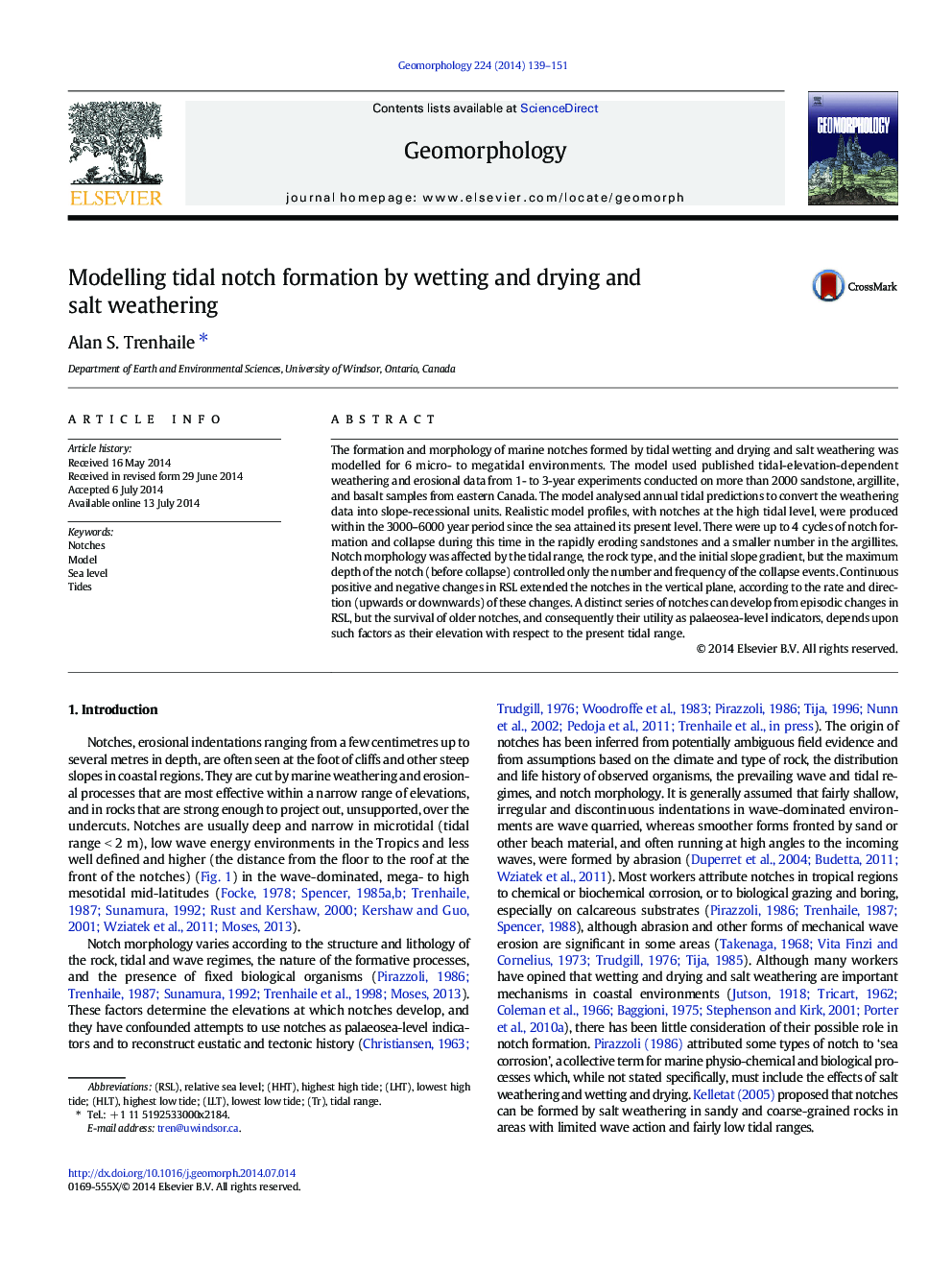| Article ID | Journal | Published Year | Pages | File Type |
|---|---|---|---|---|
| 4684427 | Geomorphology | 2014 | 13 Pages |
Abstract
The formation and morphology of marine notches formed by tidal wetting and drying and salt weathering was modelled for 6 micro- to megatidal environments. The model used published tidal-elevation-dependent weathering and erosional data from 1- to 3-year experiments conducted on more than 2000 sandstone, argillite, and basalt samples from eastern Canada. The model analysed annual tidal predictions to convert the weathering data into slope-recessional units. Realistic model profiles, with notches at the high tidal level, were produced within the 3000-6000 year period since the sea attained its present level. There were up to 4Â cycles of notch formation and collapse during this time in the rapidly eroding sandstones and a smaller number in the argillites. Notch morphology was affected by the tidal range, the rock type, and the initial slope gradient, but the maximum depth of the notch (before collapse) controlled only the number and frequency of the collapse events. Continuous positive and negative changes in RSL extended the notches in the vertical plane, according to the rate and direction (upwards or downwards) of these changes. A distinct series of notches can develop from episodic changes in RSL, but the survival of older notches, and consequently their utility as palaeosea-level indicators, depends upon such factors as their elevation with respect to the present tidal range.
Related Topics
Physical Sciences and Engineering
Earth and Planetary Sciences
Earth-Surface Processes
Authors
Alan S. Trenhaile,
